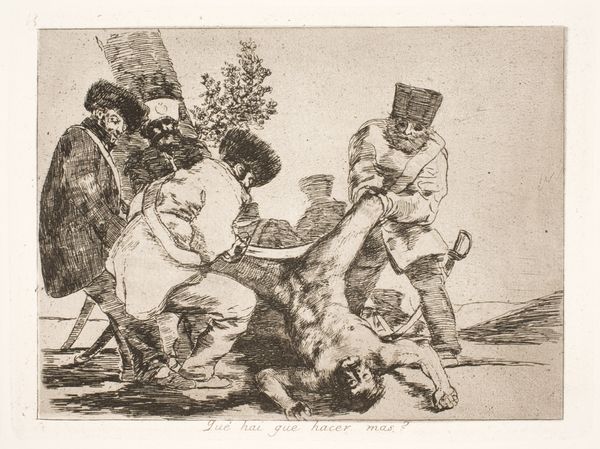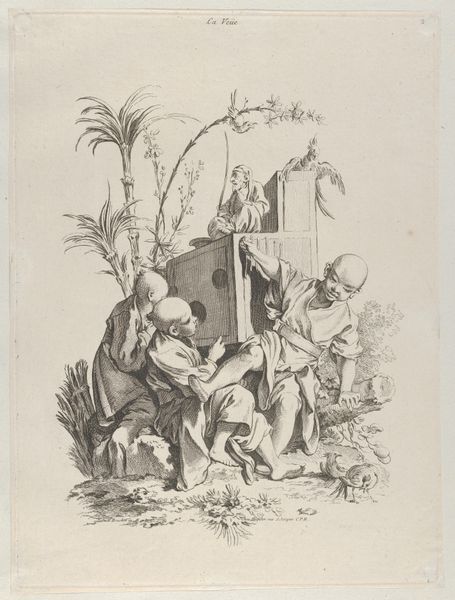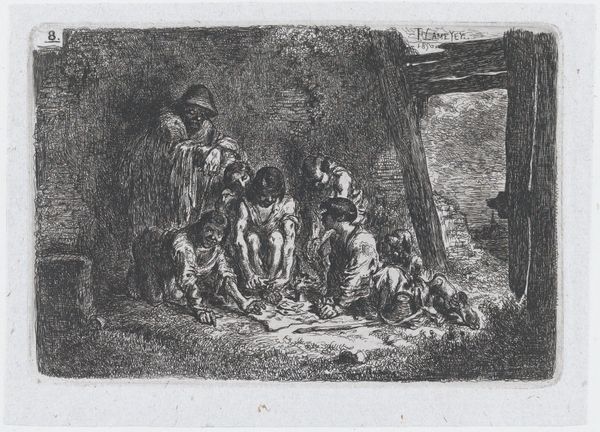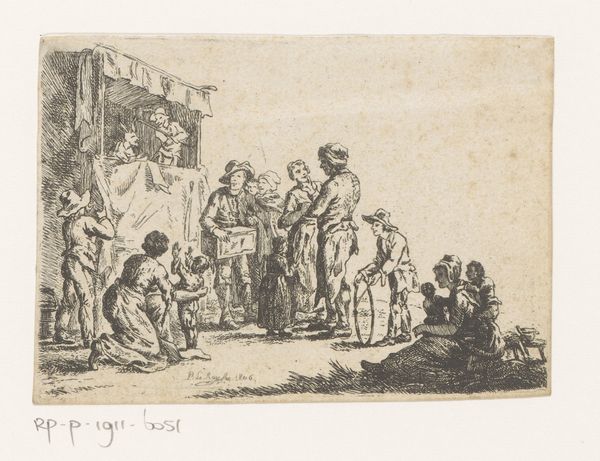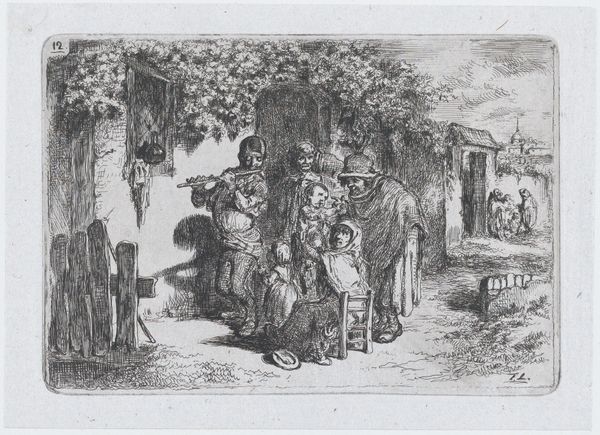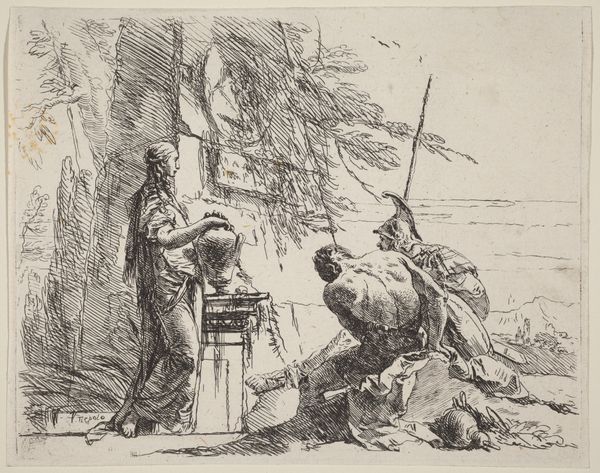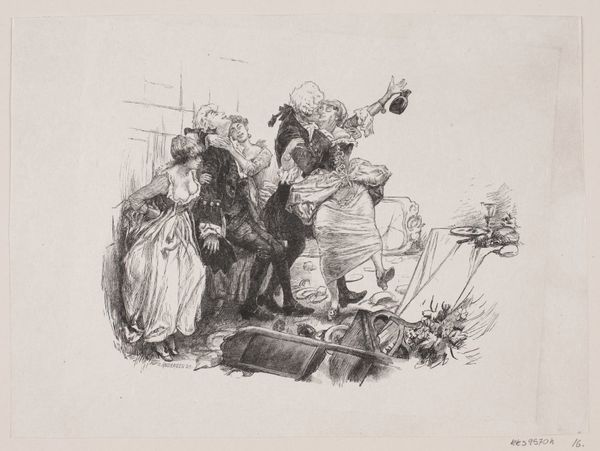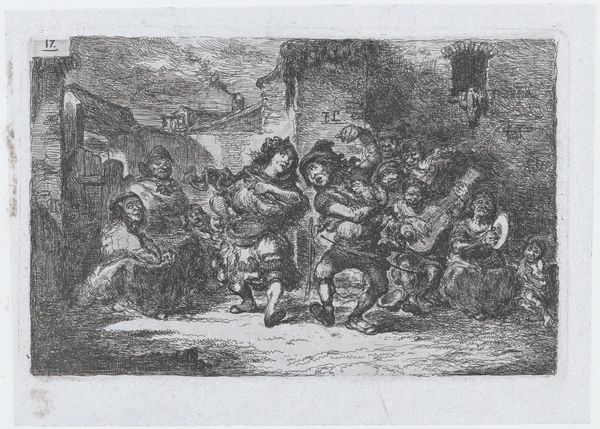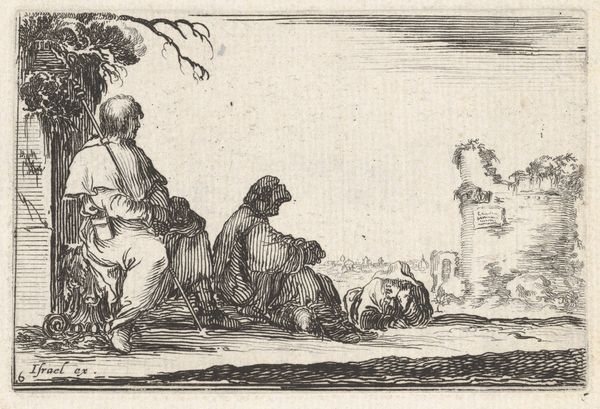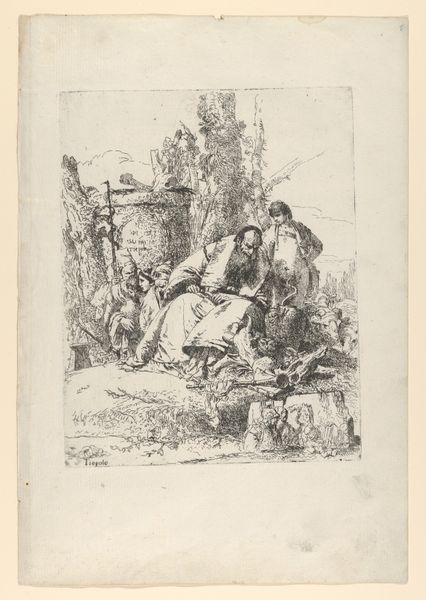
Copyright: National Gallery of Art: CC0 1.0
Editor: This etching, “Death Giving Audience,” possibly from 1785, is by Giovanni Battista Tiepolo. I'm struck by the composition; it feels both theatrical and intimate, like we're eavesdropping on a secret, macabre play. What do you see in this piece? Curator: What immediately jumps out is how Tiepolo situates death. Not as a singular, looming figure of dread, but as an active participant in society. We see Death as a seated skeleton, engaged with paperwork, seemingly managing appointments, while life, in all its vibrant variety, literally lines up to meet with it. Think about the late 18th century and the changing power dynamics. Does Tiepolo present death as an absolute authority, or something more bureaucratic, even vulnerable? Editor: Bureaucratic, that's an interesting way to put it. So, it's not just about mortality but also about systems of power and control? Curator: Precisely. Consider how the figures clustered near the door almost seem to be pleading, while even the dog seems anxious. This work acts as an allegory about social hierarchies in relation to mortality. Is Death portrayed as a great leveler or just another cog in the machine of society? Editor: So, this etching makes us think about the social structures that frame even death itself? Curator: Yes. And by depicting death as an administrator, perhaps Tiepolo invites us to interrogate not just our individual mortality, but the structures that govern our lives, from birth to death. Do you think this challenges the established order? Editor: Absolutely. I never considered viewing death within the context of social power. Now, I can see the etching posing critical questions about power structures. Curator: It’s incredible how Tiepolo layers social critique into an image of mortality, right?
Comments
No comments
Be the first to comment and join the conversation on the ultimate creative platform.
